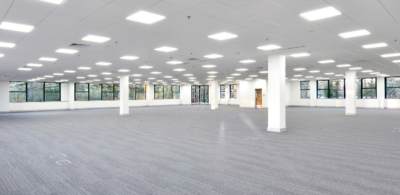As 2015 rapidly comes to a close, one can’t help but be in a reflective mood. From a tech perspective it’s been quite a busy year. It began with a bang with the launch of the Apple Watch – another leap forward in wearable tech for the masses, tracking everything from the time to your heartbeat.
In the summer, Microsoft announced that Windows 10 will make our lives simpler by working seamlessly across all of our (Microsoft) devices, further blurring exactly what a work space is.
This holiday season, a 3D printing pen is set to become a best-selling toy for children. Tech is everywhere. So why does my office look almost the same as it did in my parents’ day?
Plus: Are you a big business? Better watch your back! | Collaborate and share — or die!
But do I really need it to change? In the very short term, not really. However the demands put upon the office space around me – partly as a result of tech – is without doubt changing. Fast forward a decade and the office I’m sitting in is likely to be very different.
Chances are I won’t be in a Corporate Solutions team. My old job, like many others, now conducted by a computer. I’ll be a part of the IT department. No longer confined to the small office in the corner, IT will be the most important department in the company as like most, Colliers will run on data intelligence.
There will also be a decoupling of economic impact and size which means that the headcount is likely to be a lot smaller. To make my job easier, I’ve got a digital twin. ‘Digital Guy’ will be able to research and remember all the facts, statistics and trends ‘Human Guy’ will ever need – great news as I’ll probably be working until I’m close to 100 years old.
Also: Continued White House efforts at clean energy | Green roofs: bringing nature back to the concrete jungle
So what does all this mean for real estate? In short, the office of the future will have to be as nimble and adaptable as tech itself and the tech companies they house.
Space requirements and geography will be less important. This could mean that the office (typically only used less than 50 per cent of the time, even during working hours) has multiple functions, perhaps as a doctor’s surgery or a magistrate’s court in the evening. My guess is that public buildings such as schools, libraries and shopping centres, will be the first to do this.
To keep up with the pace of change, big institutional investors will increasingly look to involve smaller, more innovative players in their funding mix. This could mean that a building is self-owned and rented by multiple stakeholders which could have huge impact on how we want our pensions invested.
The technology for this change is to a great extent already here. The sheer cost and the required shift in thinking being the main roadblocks to change. But capitalist forces and internationalisation should see to that.
For anyone else who also has one eye on the future as 2015 ends, I would highly recommend that you take the time to find out a little more about Rohit Talwar. He is a Futurist who recently conducted a seminar for Colliers staff and clients in London. I conducted a short interview with him before the seminar, posing some key questions about what he thinks the future holds for real estate. He has inspired me to think a little bit harder about what is to come and how my clients and I can prepare for 2016 and beyond. You can watch the videos here.
Based in London, Guy heads the EMEA Corporate Solutions team for Colliers International. He was one of the first surveyors to specialize in corporate solutions in the U.K. and has worked with clients from a wide spectrum of industries including industrial, IT, financial services and consumer goods.
This post originally appeared on LinkedIn.

 Colliers Insights Team
Colliers Insights Team

 Aaron Jodka
Aaron Jodka
 Amber Merrigan
Amber Merrigan
 Andrew Steele
Andrew Steele